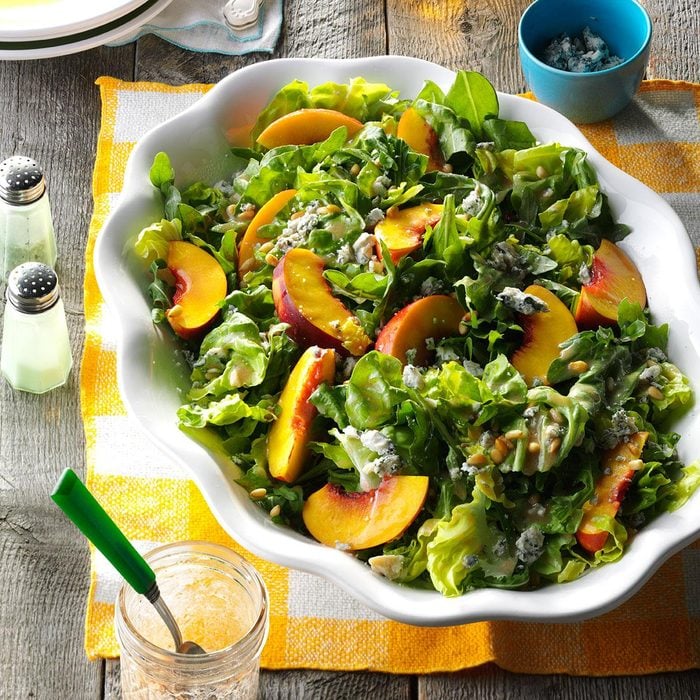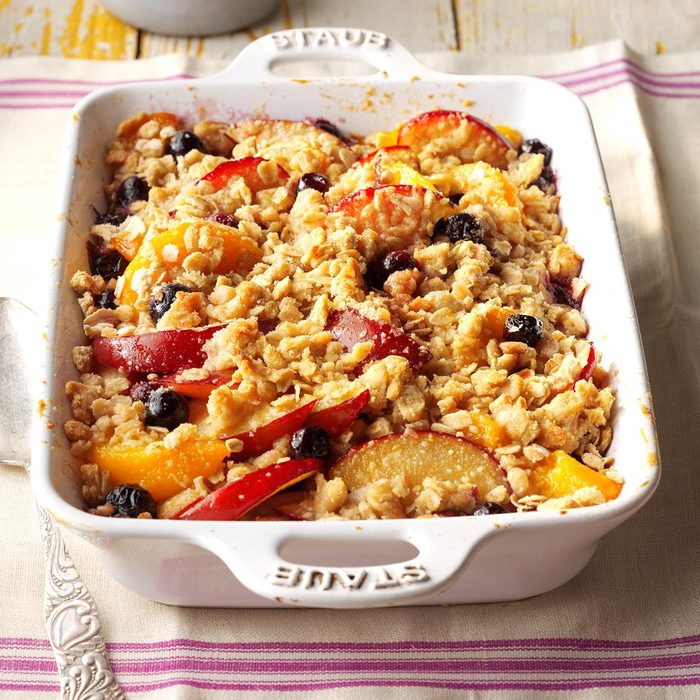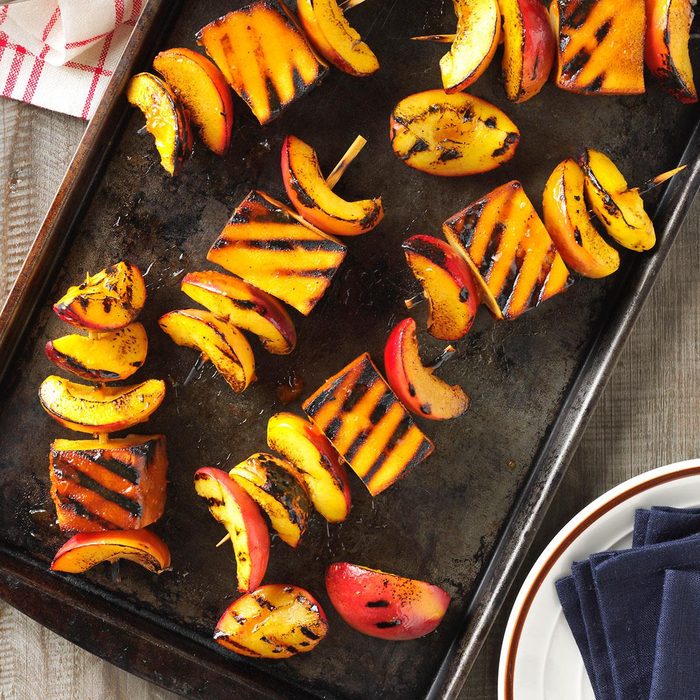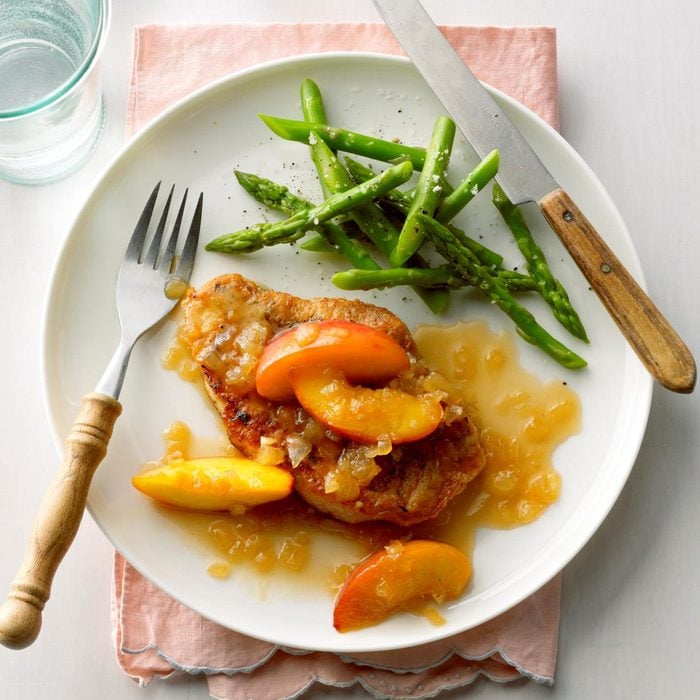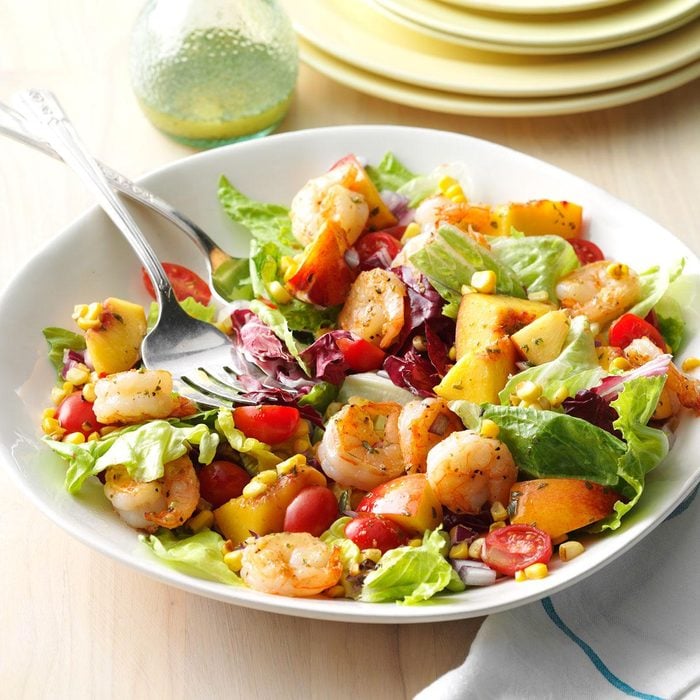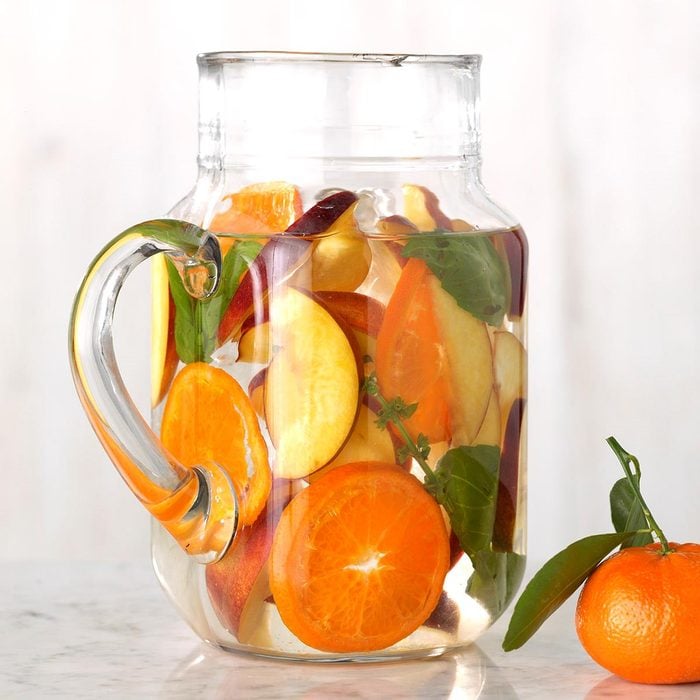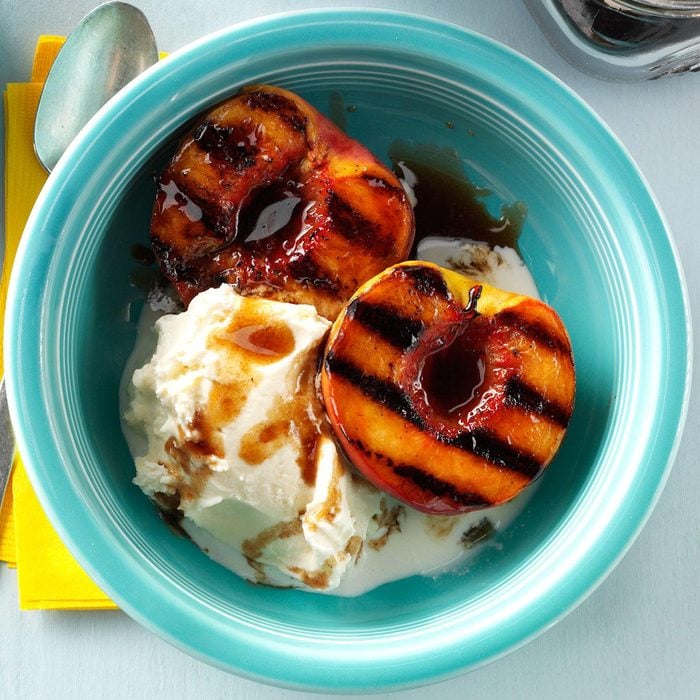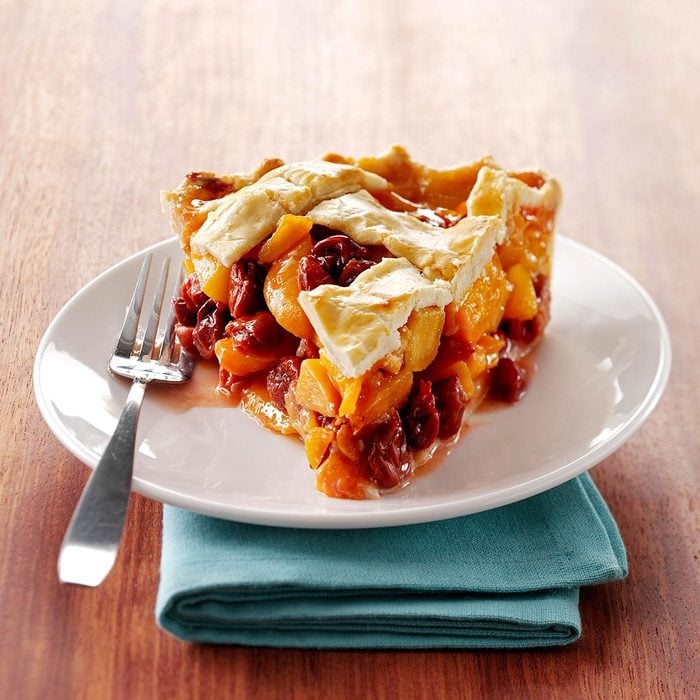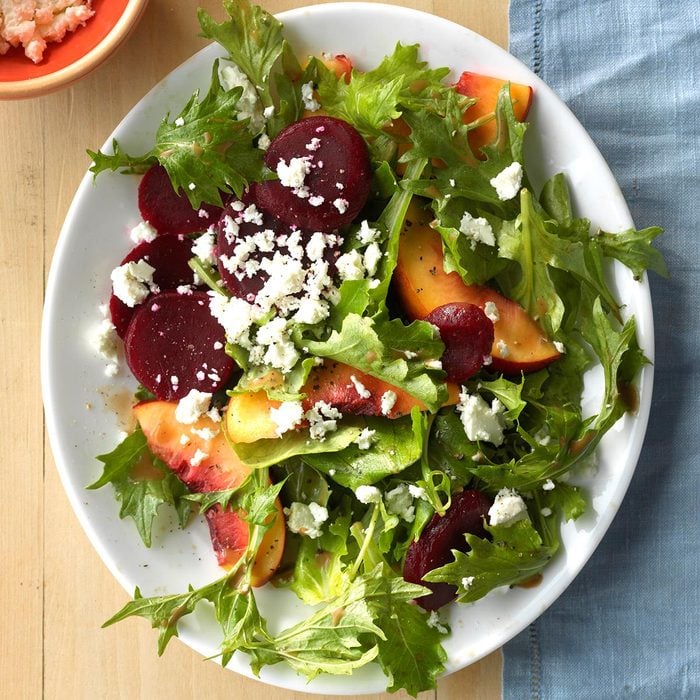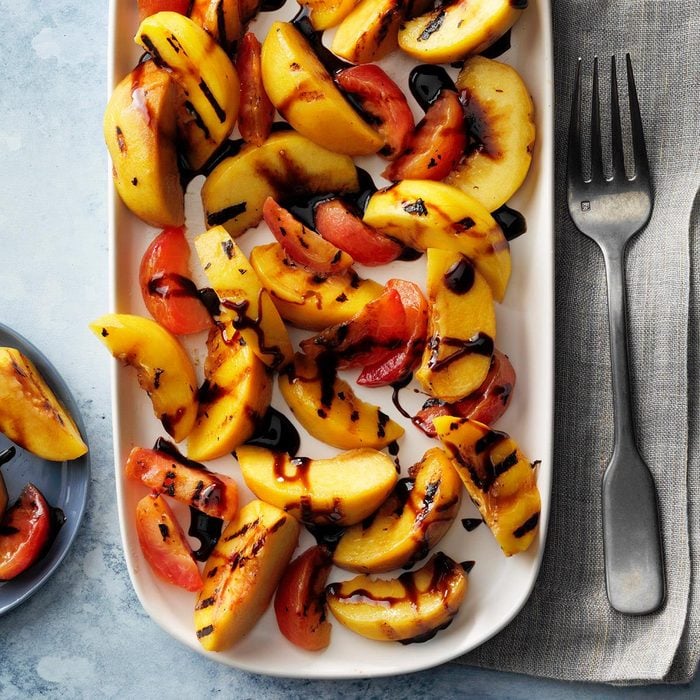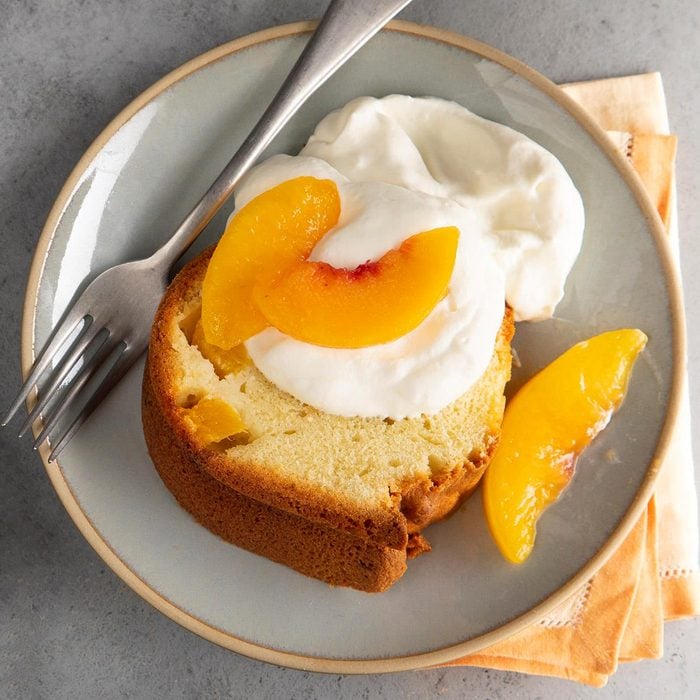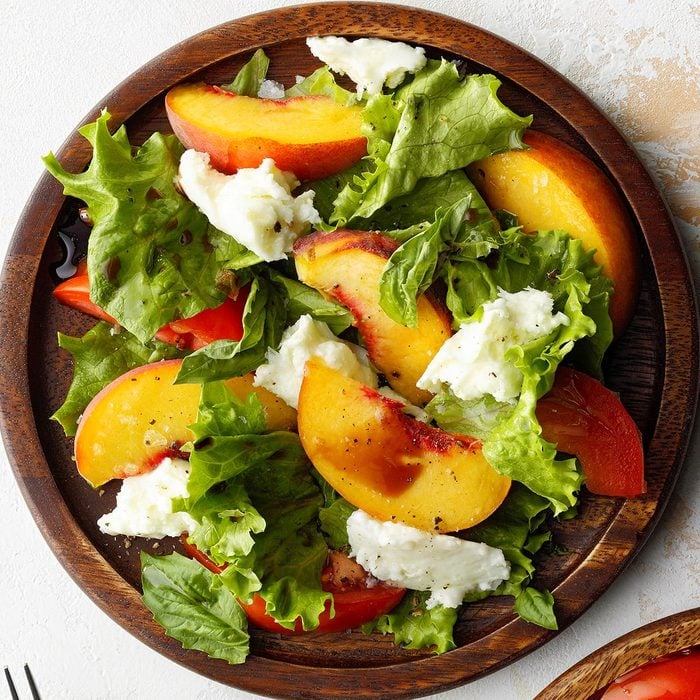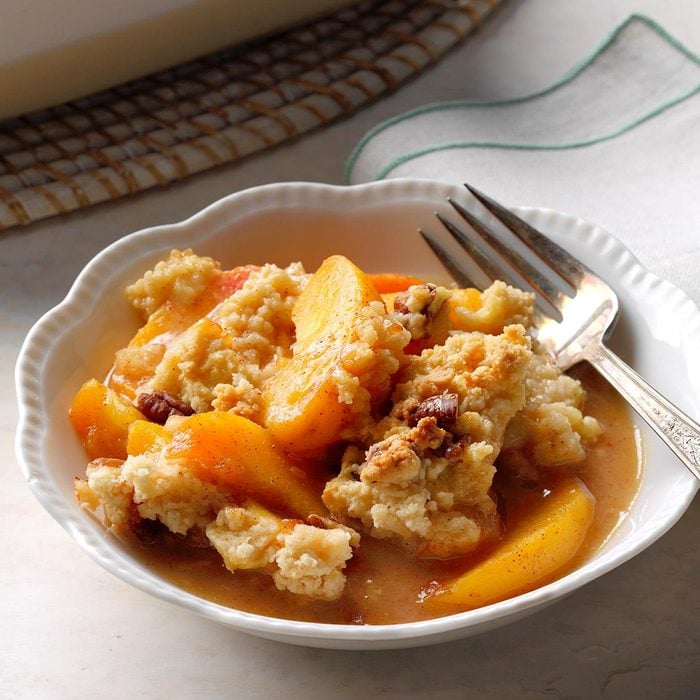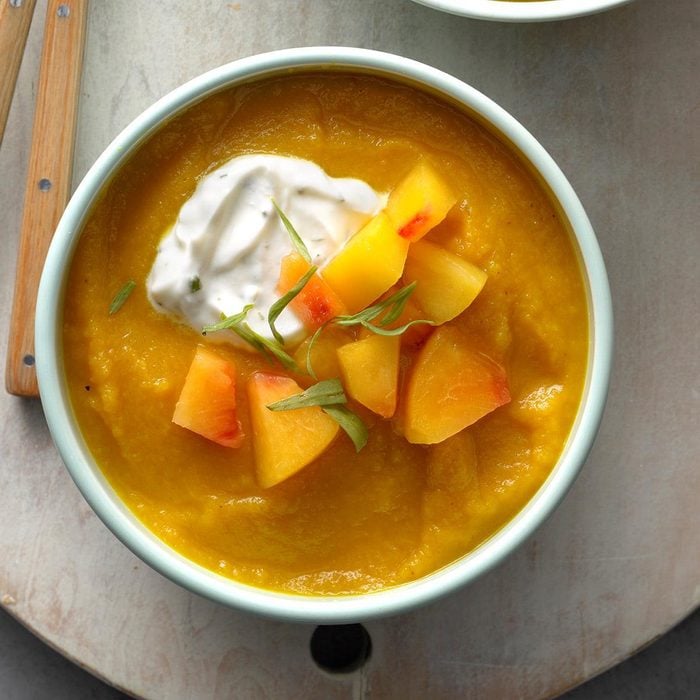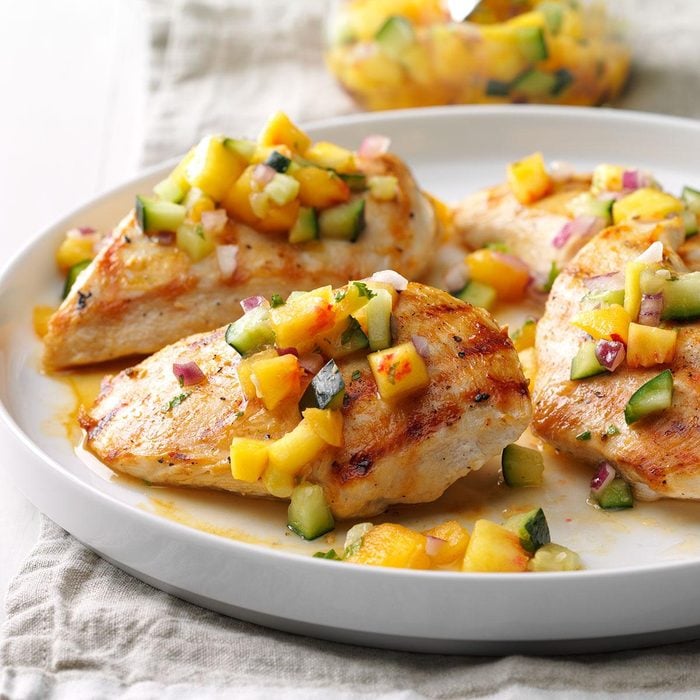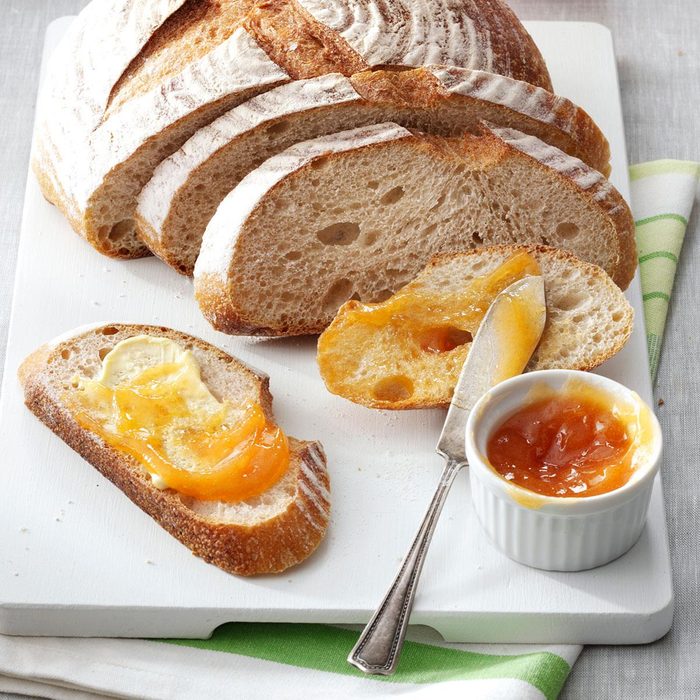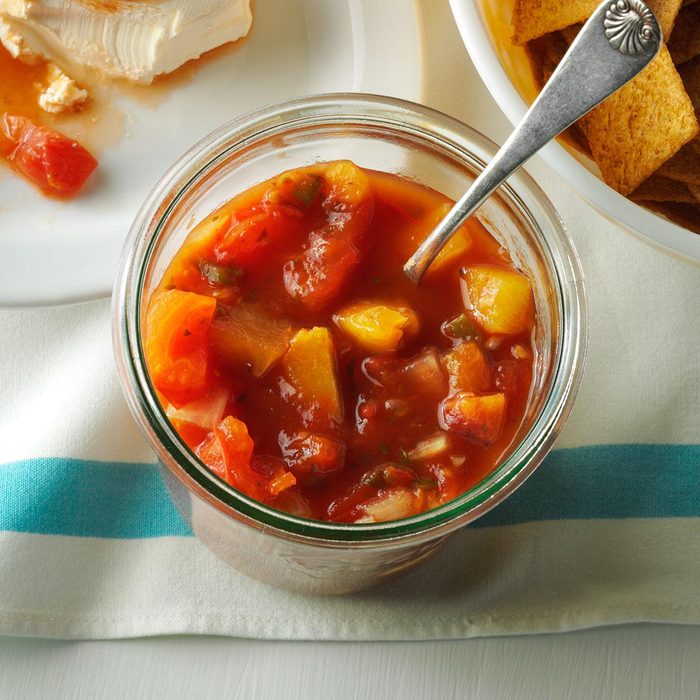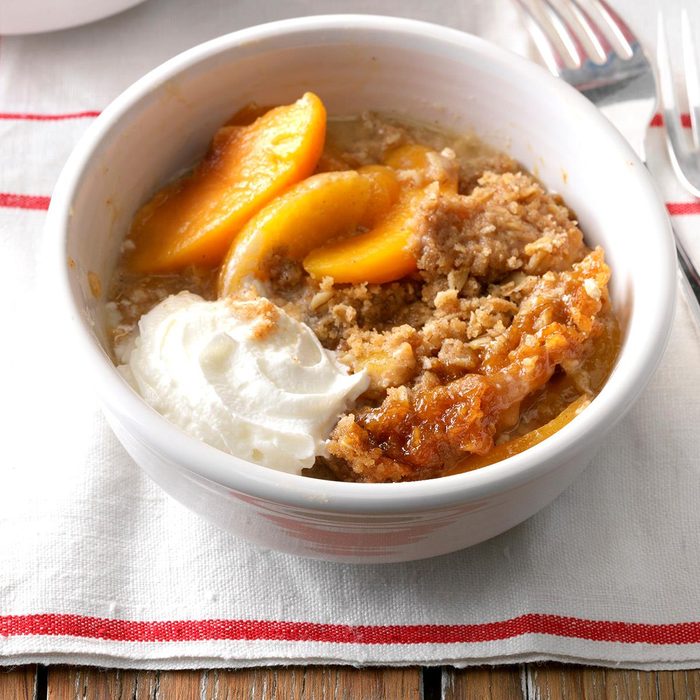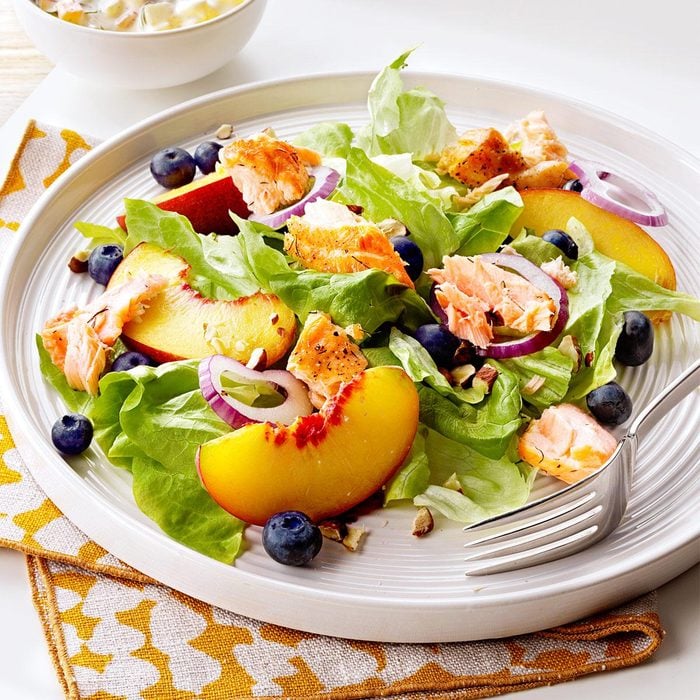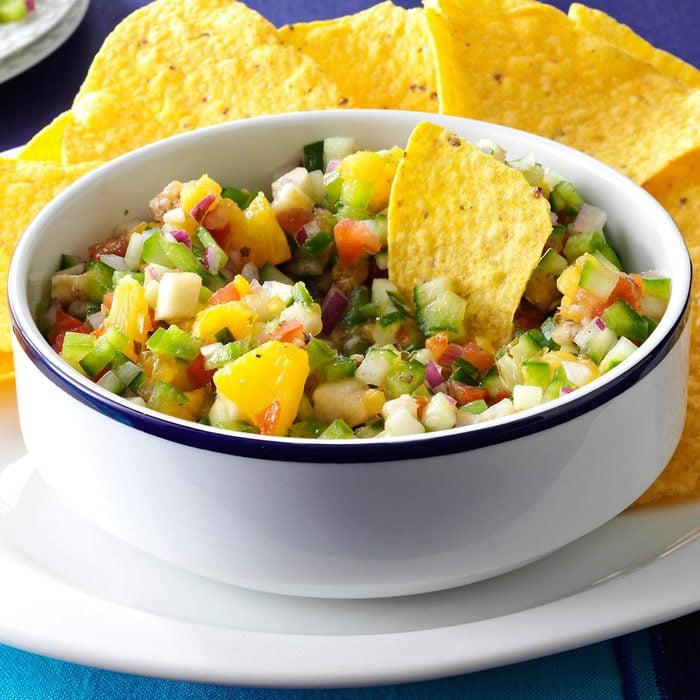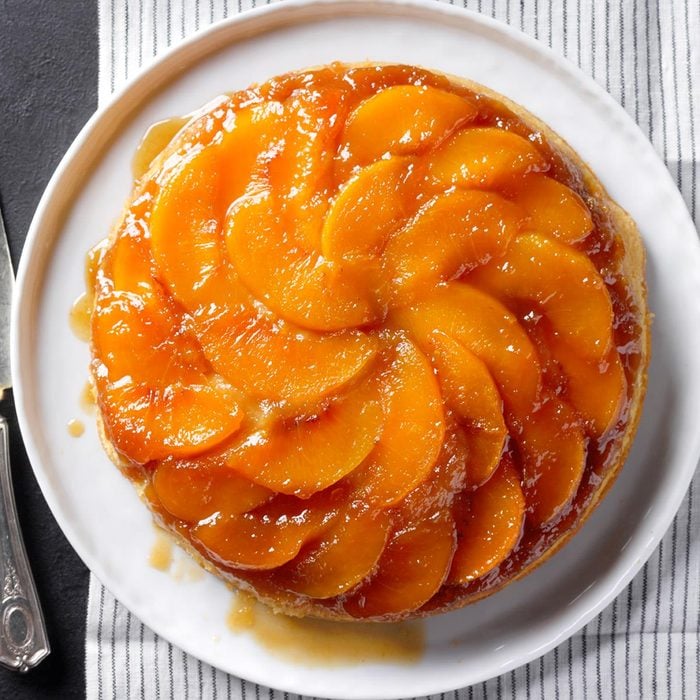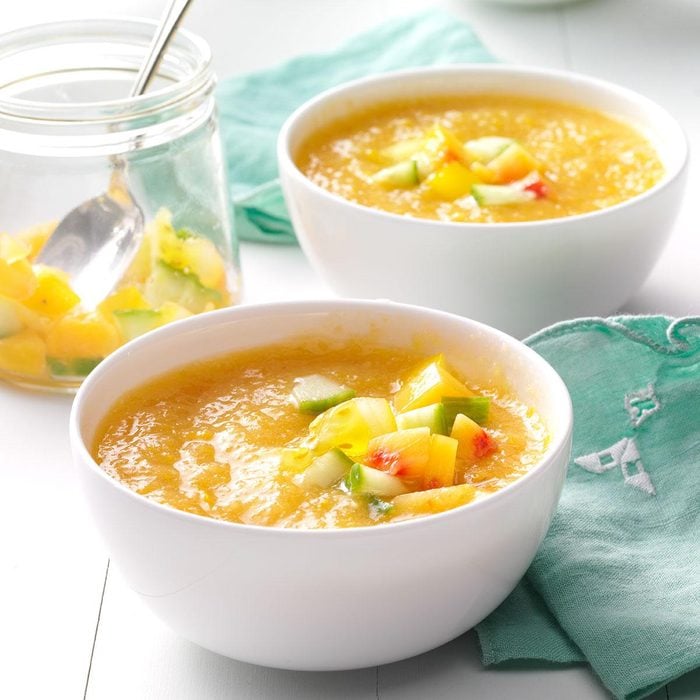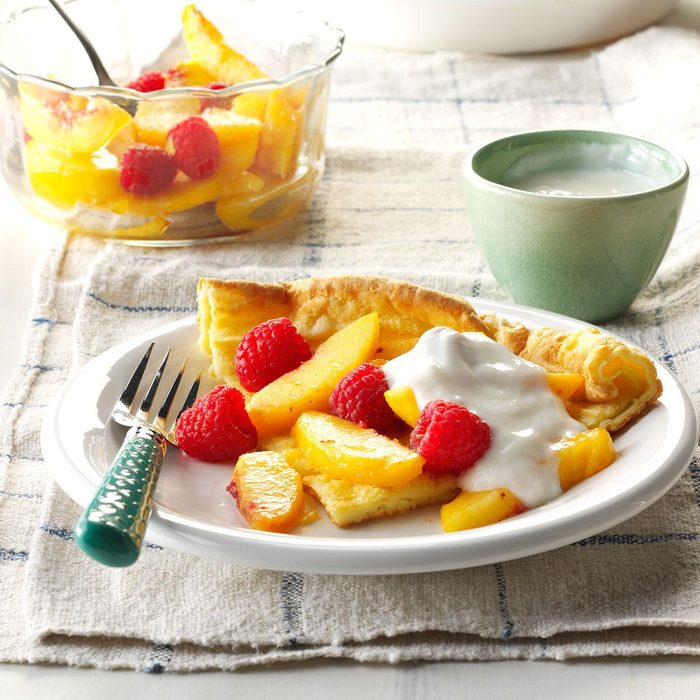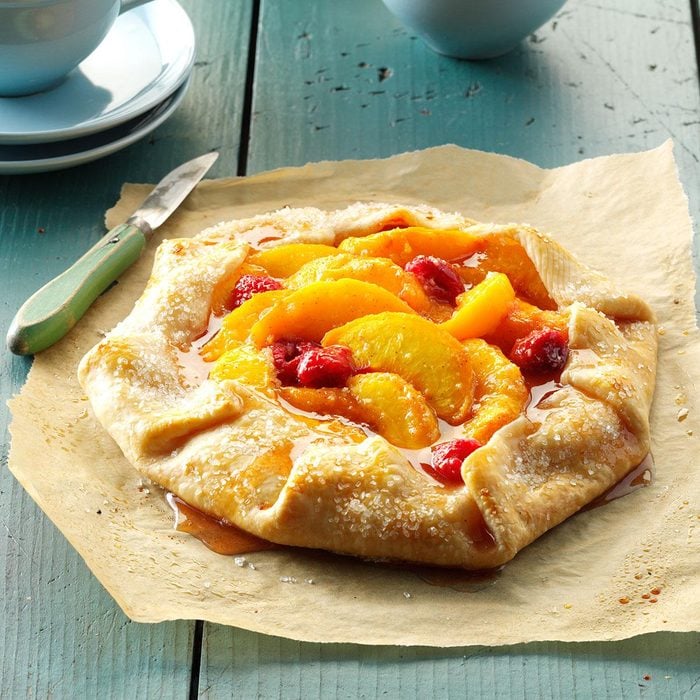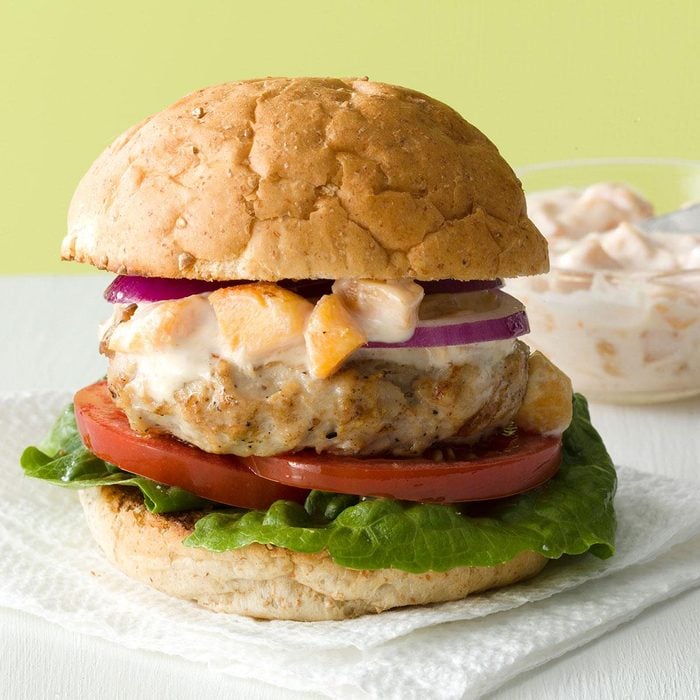Grilled Peach, Rice & Arugula Salad
This hearty salad was created when I needed to clear out some leftovers from the fridge—and it became an instant hit! The grilled peaches are the ultimate "tastes like summer" salad booster. —Lauren Wyler, Dripping Springs, Texas
Go to Recipe
Spiced Peach PuffsWe always made cream puffs for special occasions when I was growing up in our family of seven. Sometimes we used a custard filling, but this version with whipped cream and peaches is the best. —Agnes Ward, Stratford, Ontario
Don't have fresh peaches on hand? Use our guidelines to decide when you
can swap for frozen.
Peach Pound CakeOur state grows excellent peaches, and this is one recipe I'm quick to pull out when they are in season. It's a tender, moist peach pound cake that receives rave reviews wherever I take it. —Betty Jean Gosnell, Inman, South Carolina
Peach Blueberry CobblerEveryone loves a peach blueberry cobbler. This one is the perfect, scrumptious treat! If you're taking it to a party, you might want to make another one for yourself. There won't be leftovers! —Laura Jansen, Battle Creek, Michigan
Peach Caprese SaladDuring summer, I like to use the fresh ingredients I receive weekly from my local food share, and that's how I created this peach Caprese salad. I use large balls of mozzarella torn into pieces, but you could use smaller mozzarella pearls. —Mounir Echariti, Mendham, New Jersey
Lime & Spice Peach CobblerThis was my grandmother’s favorite recipe to make when they had bushels of peaches. Now I love to bake it whenever I can for my family and friends. —Mary Ann Dell, Phoenixville, Pennsylvania
Golden Beet and Peach Soup with TarragonOne summer we had a bumper crop of peaches from our two trees, so I had fun experimenting with different recipes. After seeing a beet soup recipe in a cookbook, I changed it a bit to include our homegrown golden beets and sweet peaches. —Sue Gronholz, Beaver Dam, Wisconsin
Pretty Peach TartWhen ripe peaches finally arrive at local fruit stands, this is the first recipe I reach for. The tart is perfection—a delightful way to celebrate spring's arrival! You can make the tart with other varieties of fruit, too. —Lorraine Caland, Shuniah, Ontario
Peach-Blueberry Crumble TartThis easy-to-prepare tart is a family favorite, fresh out of the oven or at room temperature with a scoop of vanilla ice cream. —
James Schend, Culinary Deputy Editor,
Taste of Home
Chicken with Peach-Cucumber SalsaTo keep our kitchen cool, we grill chicken outdoors and serve it with a minty peach salsa that can easily be made ahead. —Janie Colle, Hutchinson, Kansas
Pretty Peach JamThis homemade jam has been a favorite in my family for as long as I can remember. It's a delicious medley of fruits, including peaches, cherries, pineapple and orange. —Theresa Beckman, Inwood, Iowa
Peach Cobbler Dump CakeHomemade peach cobbler dump cake uses shortcut ingredients—canned peaches and a cake mix—to deliver a cozy, tender cake that's impossible to serve without a scoop of ice cream.
Slow-Cooked Peach SalsaFresh peaches and tomatoes make my salsa a winner over store-bought versions. As a treat, I give my coworkers several jars throughout the year. —Peggi Stahnke, Cleveland, Ohio
Here's how to
freeze peaches during peak season so you can enjoy ripe and juicy peaches all year long.
Peach BruschettaAs a starter or light snack, this bruschetta is a wonderful way to savor the season with just a bite of fresh peach amid a medley of lively flavors. —Nikiko Masumoto, Del Ray, California
Slow-Cooker Peach CrumbleI look forward to going on our beach vacation every year, but I don't always relish the time spent cooking for everybody. This slow-cooker dessert (or breakfast!) gives me more time to lie in the sun and enjoy the waves. Melty ice cream is a must. —Colleen Delawder, Herndon, Virginia
Just Peachy Pork TenderloinI had a pork tenderloin and ripe peaches that begged to be put together. The results proved irresistible! This fresh entree tastes like summer. —Julia Gosliga, Addison, Vermont
Baked Peach PancakeThis dish makes for a dramatic presentation. I usually take it right from the oven to the table, fill it with peaches and sour cream and serve it with bacon or ham. Whenever I go home, my mom (the best cook I know) asks me to make this. —Nancy Wilkinson, Princeton, New Jersey
Caribbean-Spiced Pork Tenderloin with Peach SalsaI love this recipe because of the depth of flavors and burst of colors. It's quick and easy to make. It's best when peaches are in season, but you could try strawberries or pineapple instead. —Holly Bauer, West Bend, Wisconsin
Peach Blueberry PieWhat a flavor! That's what I hear most often when guests taste this pie. —Sue Thumma, Shepherd, Michigan
Northwest Salmon SaladI love that I can use my favorite Northwest ingredients—salmon, blueberries and hazelnuts—all in one recipe. The salmon
and dressing make a tasty sandwich too. —Davis Clevenger, Dexter, Oregon
Peach SmoothieWhip up this creamy peach smoothie as a refreshing and nutritious snack or a quick chilled breakfast. Because you can use frozen fruit, you don't have to wait until peaches are in season to enjoy this delicious smoothie. —Martha Polasek, Markham, Texas
Summer Chicken Macaroni SaladSure, you have a macaroni salad recipe, but do you have a chicken macaroni salad? This one's filled with bright, fresh flavors, and it's hearty enough to stand on its own as a light meal.
Cucumber Fruit SalsaOur garden always gives us way more cucumbers and tomatoes than we know what to do with. But we’ve learned how to handle the unexpected with a surprise of our own. This is our pretty, fresh way to use up the bounty. —Anna Davis, Springfield, Missouri
Pickled PeachesFresh peach quarters soaked in vinegar, sugar and warm spices are a classic southern treat. Serve with ice cream, pound cake, roasted meat and veggies, or mix into your favorite salad greens.—Nick Iverson, Milwaukee, Wisconsin
Rich Fruit KuchensThis German classic is such a part of our reunions, we designate a special place to serve it. Five generations flock to the "Kuchen Room" for this coffee cake. —Stephanie Schentzel, Northville, South Dakota
Georgia Peach Ice CreamMy state is well known for growing amazing peaches. This ice cream has been a family favorite for more than 50 years! —Marguerite Ethridge, Americus, Georgia
Southern Peach Upside-Down CakeA dear friend from the South gave me the idea for this peachy cake. I add bourbon and top each slice with vanilla or cinnamon ice cream. —Trista Jefferson, Batavia, Ohio
Golden Summer Peach GazpachoBecause peaches and tomatoes are in season at the same time, I like to blend them into a cool, delicious soup. Leftovers keep well in the fridge—but they rarely last long enough to get there. —Julie Hession, Las Vegas, Nevada
Raspberry Peach Puff PancakeHere's a simple, satisfying treat that's perfect when you have company for brunch. It's elegant enough that you can even serve it for dessert at other meals. —
Taste of Home Test Kitchen, Milwaukee, Wisconsin.
Raspberry Peach JamWhen my jam won a first-place pink ribbon at our local county fair, I was overjoyed but it's not the highest compliment that recipe has received. Two girlfriends that I share it with tell me if they don't hide the jam from their husbands and children, they'll devour an entire jarful at just a sitting! —Patricia Larsen, Leslieville, Alberta
Grilled Honey-Balsamic Glazed FruitOne summer my mother-in-law made us grilled peaches basted with a sweet and tangy sauce. These are so good I'm always tempted to eat the whole batch. —Kristin Van Dyken, West Richland, Washington
Raspberry Peach TartThere’s no shortage of fresh peaches and raspberries where I live. I use the fruit I grow to bake up this sweet and special fruit tart.— Mary Ann Rempel, Southold, New York
Peaches & Cream Jelly RollCake rolls make a lovely presentation for a party, and they are simple to cut into even slices. My father taught me how to make them, and sometimes we get together and make them for family and friends. —Malena Coleman, Rockville, Indiana
Makeover Turkey Burgers with Peach MayoThe unique fruit and mayo combination puts this burger over the top. You can also substitute nectarines for the peaches. They're both delicious! —Charlene Chambers, Ormond Beach, Florida






















